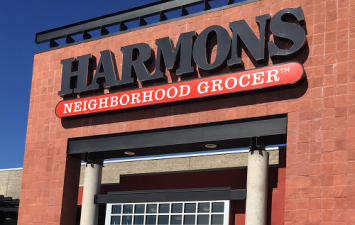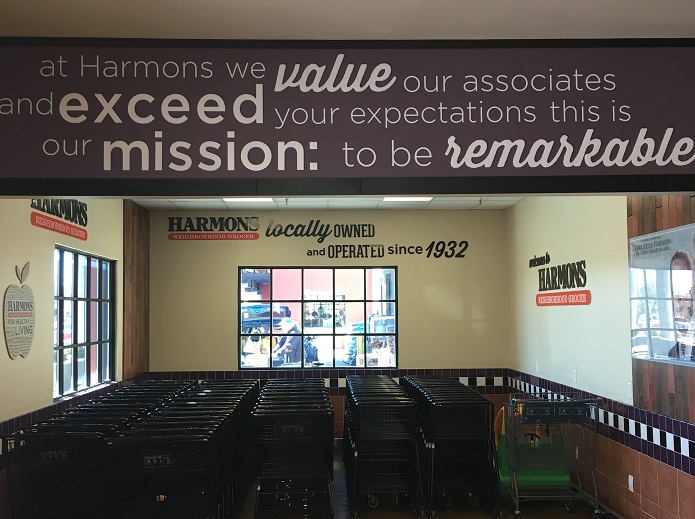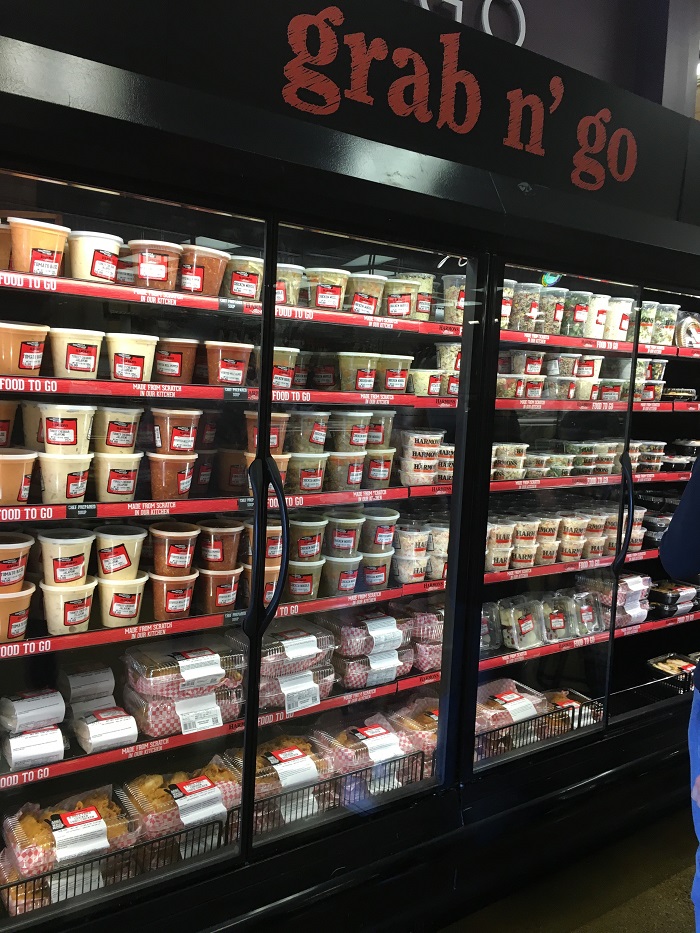Harmons’ High-Touch Shopping Experience 4/11/2017
Too often manufacturers big or small have their eyes set on scale, with big box national and multinational retailers as the answer to all their growth strategies. Such laser focus can actually leave tremendous opportunities for development on the sideline.
Here’s what I’m talking about. Recently, I was driving through southern Utah returning from a trip to Disneyland with the grandkids when we stopped at Harmons Neighborhood Grocer, part of a local 17-store Utah grocery chain named after its founder.
What became apparent to me is that, as big national chains are chasing experience, Harmons’ is actually executing on it. I found the shopping experience engaging from my first step inside the Harmons store. And it reflected the neighborhood in a big way that national retailers sometimes have difficulty reaching by the nature of their size and store count, which necessitates that they balance localization with efficiency of operations.
This was immediately evident on entering the store. Just past the shopping carts was a bright and beautiful deli case with prepped soups and sandwiches made fresh from the active and extended 100’ plus deli counter down a few steps to the right.
It was a delightful experience with focus on food. There was sampling of juicy oranges, fresh baked goods and more. There was selection and variety that included olive and cheese bars and gelato stands. This will sound strange except for those that are retail marketers like me—I wish I could have spent more time wandering and discovering all that the store had to offer. And this is exactly what shows up on a merchandise or marketing brief: Discovery. We talk discovery, we write discovery, but more often than not we don’t deliver on discovery.
How often does the phrase “exceed customer expectations” appear on a brief? Almost alwayss.
One of the complaints I hear from customers is that there is a general lack of service in retail. Oftentimes, the shopping experience is predictable and rarely deliverable. Of course, this is not from malintent and lack of sophisticated marketing documents, but rather from the sheer wieight of scale that can squeeze service and innovation from the experience.
That’s not to say that all large retailers lack service, but it must be trained into the staff and reinforced via examples from store leadership. I remember mystery shopping at Safeway, and when I had a question, the associate accompanied me to the aisle to the product I requested. The associate credited the Safeway manager with training him to do that. But such training requires investment. At Harmon’s I saw an immediate impact of having ample employees behind the counters, in the aisles, at the register and front end areas of the store, all eager to help in any way possible.
It’s a problem that comes with scale and trying to cut costs on a tight margin business. Nevertheless, cutting labor is cutting service. There’s no way around it. There is something to be said for high tech and being able to predict the number of shoppers walking the store and knowing how many cashier’s will be needed in the front and to process the customers that are in the queue in seconds. Tracking customers in store is an amazing feat of technology, but no innovation matches the timeless beauty of high touch. The friendly smiles and sincere inquiries from Harmons’ assoicates was indeed a nice touch to the shopping trip.
That’s not to say that there aren’t sincere and hard working associates at the national chains but the smaller scale of neighborhood stores like Harmons shows a certain pride and training that is sometimes cut out of budgets of larger stores.
So if you’re a merchant looking for impact on this year’s sales for your products and services remember to look at the many independent shops like Harmons throughout the country.
I’m sure Harmons founders Jake and Irene Harmon would be proud to see the progress made by their grandsons, Bob and Randy. It’s unlikely that Harmons has the big marketing budgets to match its larger competitors, but it’s clear they have a competitive advantage by cutting distance of crop to shop in partnership with local producers. Moreover, it’s one thing to have corporate values lining the hallways back at the home office and altogether different to make a promise to the customer as they enter the store and read your purpose and commitment the shopping experience.
Harmons certainly did, and with the right commitment and training, your stores can do the same.




Armando Martín lives in Denver, Colorado, enjoyed a successful career in corporate America that carried him throughout Latin America. Armando co-founded the country’s first multicultural retail marketing agency, XL Edge. He currently devotes his consulting practice to multicultural strategy and retail leadership. He is also on the board of the National Hispanic Voter Education Foundation